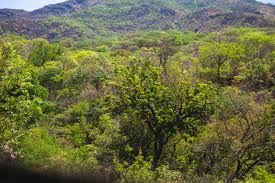The Forest Policy which was recently launched aims at addressing the threats of deforestation and degradation of forest ecosystems. The policy, which consists of nine pillars, outlines strategies to protect and sustainably manage the country’s state, exotic plantation, and community forests and woodlands.
“The integrity of Zimbabwe’s state, exotic plantation and community forests and woodlands is threatened by deforestation and degradation of forest ecosystems including fragmentation and loss of biodiversity. This is a result of direct causes and indirect drivers,” reads the policy document. According to the policy document, these direct causes are driven by underlying forces.
“Direct causes of deforestation and biodiversity loss include clearance of land for agriculture and mining, overreliance on fuelwood for energy, dry season forest fires, illegal settlements in state gazetted forests and exotic plantations, and invasive alien species.
“The direct causes identified above are driven by underlying forces such as market failure, inadequate budgetary resources for the forest sector and limited institutional capacity, weak implementation of land-use plans, inadequate and outdated forest laws,” says the document. As a measure to address these challenges, the government has committed to supporting forest institutions to enable the forestry sector to tackle both the direct causes and underlying drivers of deforestation and biodiversity loss.
Key commitments outlined in pillar one of the Forest Policy include setting aside and managing selected forest diversity areas, extending gazetted forests to include catchment areas, steep slopes, and other vulnerable sites, and halting and preventing illegal settlements in gazetted forests. The policy also highlights the importance of comprehensive environmental and social impact assessments for all plantation developments to ensure they do not compromise other ecosystems and local livelihoods.
In addition, the government plans to formulate and implement a comprehensive veld fire management framework to maintain the ecological integrity of forests and reverse deforestation and forest degradation by increasing planted area and promoting woodland management.



